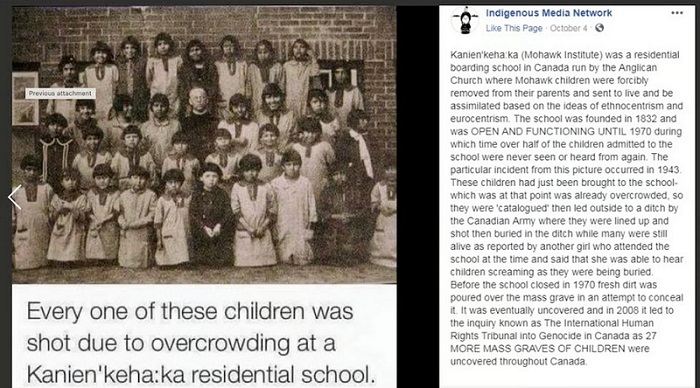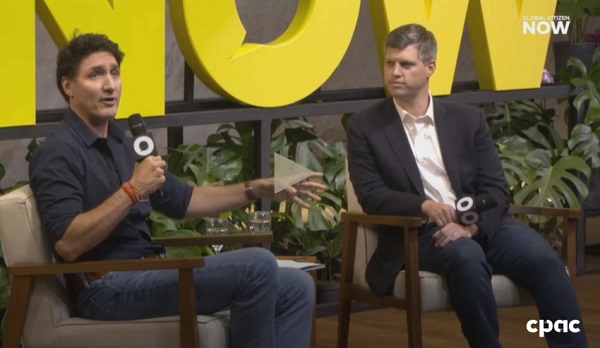Alberta
The Alberta energy transition you haven’t heard about

From the Canadian Energy Centre
Horizontal drilling technology and more investment in oil production have fundamentally changed the industry
There’s extensive discussion today about energy transition and transformation. Its primary focus is a transition from fossil fuels to lower-carbon energy sources.
But in Alberta, a fundamental but different energy transition has already taken place, and its ripple effects stretch into businesses and communities across the province.
The shift has affected the full spectrum of oil and gas activity: where production happens, how it’s done, who does it and what type of energy is produced.
Oil and gas development in Alberta today largely happens in different places and uses different technologies than 20 years ago. As a result, the companies that support activity and the communities where operations happen have had to change.
Regional Shift
For the first decade of this century, in terms of numbers of wells, most drilling activity happened in central and southeast Alberta, with companies primarily using vertical wells to target conventional shallow natural gas deposits.
In 2005, producers drilled more than 8,000 natural gas wells in these areas, according to Alberta Energy Regulator (AER) records.
But then, three things happened. The price of natural gas declined, the price of oil went up and new horizontal drilling technology unlocked vast energy resources that were previously uneconomic to produce.
By 2015, the amount of natural gas wells companies drilled in central and southeast Alberta was just 256. In 2023, the number dropped to only 50. Over approximately 20 years, activity dropped by 99 per cent.
Where did the investment capital go? The oil sands and heavy oil reserves of Alberta’s northeast and shale plays, including the Montney and Duvernay, in the province’s foothills and northwest.
Nearly 60 per cent of activity outside of the oil-rich northeast occurred in central and southeast Alberta in 2005. By 2023, overall oil and gas drilling in those regions had dropped by 30 per cent, while at the same time increasing by 159 per cent in the foothills and northwest.
“The migration of activity from central and southern Alberta to other regions of the province has been significant,” says David Yager, a longtime oil and gas service company executive who now works as a special advisor to Alberta Premier Danielle Smith.
“For decades there were vibrant oil service communities in places like Medicine Hat, Taber, Brooks, Drumheller and Red Deer,” he says.
“These [oil service communities] have contracted materially with the new service centres growing in places like Lloydminster, Bonnyville, Rocky Mountain House, Edson, Whitecourt, Fox Creek and Grande Prairie.”
Fewer Wells and Fewer Rigs
Extended-reach horizontal drilling compared to shallow, vertical drilling enables more oil and gas production from fewer wells.
Outside the oil sands, in 2005, producers in Alberta drilled 17,300 wells. In 2023, that dropped to just 3,700 wells, according to AER data.
Despite that massive nearly 80 per cent decrease in wells drilled, total production of oil, natural gas and natural gas liquids outside of the oil sands is essentially the same today as it was in 2005.
Last year, non-oil sands production was 3.1 million barrels of oil equivalent (boe) per day, compared to 3.4 million boe per day in 2005–but from about 13,600 fewer new wells.
Innovation from drilling and energy services companies has been a major factor in achieving these impressive results, says Mark Scholz, CEO of the Canadian Association of Energy Contractors. But there’s been a downside.
Yager notes that much of the drilling and service equipment employed on conventional oil and gas development is not suited for unconventional resource exploitation.
Scholz says the productivity improvements resulted in an oversupply of rigs, especially rigs with limited depth ratings and limited capability for “pad” drilling, where multiple wells are drilled the same area on the surface.
Rigs have been required to drill significantly deeper wellbores than in the traditional shallow gas market, he says.
“This has resulted in rig decommissioning or relocations and a tactical effort to upgrade engines, mud pumps, walking systems and pipe-handling technology to meet evolving customer demands,” he says.
“You need not go beyond the reductions in Canada’s drilling rig fleet to understand the impact of these operational innovations. Twenty years ago, there were 950 drilling rigs; today, we have 350, a 65 per cent reduction. [And] further contractions are likely in the near term.”
Scholz says, “collaboration and partnerships between producers and contractors were necessary to make this transition successful, but the rig fleet has evolved into a much deeper, technologically advanced fleet.”
A Higher Cost of Entry
Yager says that along with growth in the oil sands, replacing thousands of new vertical shallow gas wells with fewer, high-volume extended-reach horizontal wells has made it more challenging for smaller companies to participate.
“The barriers to entry in terms of capital required have changed tremendously. At one time a new shallow gas well could be drilled and put on stream for $150,000. Today’s wells in unconventional plays cost from $3 million to $8 million each,” he says.
“This has materially changed the exploration and production companies developing the resource, and the type of oilfield services equipment employed. An industry that was once dominated by multiple smaller players is increasingly consolidating into fewer, larger entities. This has unintended consequences that are not well understood by the public.”
More Oil (Sands), Less Gas
Higher oil prices and horizontal drilling helped change Alberta from a natural gas hotbed to a global oil powerhouse.
In the oil sands, horizontal wells enabled a key technology called steam assisted gravity drainage (SAGD), which went into commercial service in 2001 to allow for a massive expansion of what is referred to as in situ oil sands production.
In 2005, mining dominated oil sands production, at about 625,000 barrels per day compared to 440,000 barrels per day from in situ projects. In situ oil sands production exceeded mining for the first time in 2013, at 1.1 million barrels per day compared to 975,000 barrels per day from mining.
Today the oil sands production split is nearly half and half. Last year, in situ projects–primarily SAGD–produced approximately 1.8 million barrels per day, compared to about 1.7 million barrels per day from mining.
Natural gas used to exceed oil production in Alberta. In 2005, natural gas provided 54 per cent of the province’s total oil and gas supply. Nearly two decades later, oil accounts for 60 per cent compared to 29 per cent from natural gas. The remaining approximately 11 per cent of production is natural gas liquids like propane, butane and ethane.
Alberta’s non-renewable resource revenue reflects the shift in activity to more oil sands and less natural gas.
In 2005, Alberta received $8.4 billion in natural gas royalties and $950 million from the oil sands. In 2023, the oil sands led by a wide margin, providing $16.9 billion in royalties compared to $3.6 billion from natural gas.
Innovation and Emerging Resources
As Alberta’s oil and gas industry continues to evolve, another shift is happening as investments increase into emissions reduction technologies like carbon capture and storage (CCS) and emerging resources.
Since 2015, CCS projects in Alberta have safely stored more than 14 million tonnes of CO2 that would have otherwise been emitted to the atmosphere. And more CCS capacity is being developed.
Construction is underway on an $8.9-billion new net-zero plant producing polyethylene, the world’s most widely used plastic, that will capture and store CO2 emissions using the Alberta Carbon Trunk Line hub. Two additional CCS projects got the green light to proceed this summer.
Meanwhile, in 2023, producers spent $700 million on emerging resources including hydrogen, geothermal energy, helium and lithium. That’s more than double the $230 million invested in 2020, the first year the AER collected the data.
“Energy service contractors are on the frontlines of Canada’s energy evolution, helping develop new subsurface commodities such as lithium, heat from geothermal and helium,” Scholz says.
“The next level of innovation will be on the emission reduction front, and we see breakthroughs in electrification, batteries, bi-fuel engines and fuel-switching,” he says.
“The same level of collaboration between service providers and operators that we saw in our productivity improvement is required to achieve similar results with emission reduction technologies.”
Alberta
Hells Angels member arrested with handgun in Red Deer


|
|
Alberta
Protecting Alberta’s economic future from Ottawa
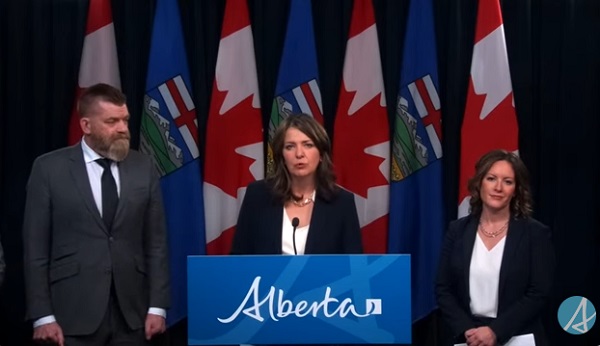
Alberta’s government will introduce an Alberta Sovereignty Within a United Canada Act motion to fight back against the unconstitutional, job-killing federal emissions cap.
The proposed oil and gas emissions cap is in reality a federal government-imposed cap on oil and gas production and, if implemented, will result in a production cut of at least one million barrels a day of oil and gas in Alberta, while effectively prohibiting any production growth.
The Canadian constitution clearly gives provinces exclusive jurisdiction over non-renewable natural resource development. Multiple reports have shown an emissions cap will kill 150,000 jobs, devastate Alberta’s economy, cut production, and hurt Albertans.
Yet, on Nov. 4, the federal government introduced draft regulations for an oil and gas emissions cap, ignoring concerns from many provinces, industry, businesses and Albertans.
In response, Alberta’s government will introduce an Alberta Sovereignty Within a United Canada Act motion to stop a federal cap from infringing on the province’s distinct jurisdiction and killing good-paying jobs. The resolution asks the legislative assembly for approval to take a series of swift, effective actions designed to protect Alberta if the production cap ever becomes law.
“We will continue to defend our province from Ottawa’s senseless and direct attack. Our motion protects Albertans’ jobs and livelihoods, puts Ottawa back in their place, and ensures we can continue to support global energy security with Alberta oil and gas for decades to come.”
Independent analysis by the Conference Board of Canada, Deloitte and S&P Global all show the devastating impact of the federal government’s proposed oil and gas emissions cap. This includes cutting production by one million barrels a day by 2030 and draining billions from Canada’s economy. In addition, the Conference Board of Canada estimates that up to 150,000 Canadian jobs could be lost as a result of the cap. As a result of these – and other – impacts, the average Canadian family would have up to $419 less for groceries, mortgage payments and utilities every month.
“This cap is not actually about emissions. This is about the federal government wanting to cut oil and gas production and control our energy sector, even if it costs thousands of jobs and hurts Canadians from coast to coast. We are standing up for our province and protecting Albertans from this extreme federal overreach.”
If passed, the actions proposed in the Alberta Sovereignty Within a United Canada Act motion will help protect Alberta’s economy while the province continues producing responsible energy to meet the world’s growing demands.
The motion proposes that the government launch an immediate constitutional challenge when, or if, the federal production cap becomes law. It also instructs the government to consider passing legislation, amending provincial regulations or taking whatever other steps are needed to:
- Ensure that no provincial entity participates in the enforcement or implementation of the federal cap.
- Ensure that all interest holder oil and gas production facilities and related infrastructure in Alberta (Interest Holder Facilities) are ‘essential infrastructure’ subject to the protections granted under Alberta’s Critical Infrastructure Defence Act.
- Prohibit entry by any individual, including any federal official or contractor, onto any Interest Holder Facilities, excepting any interest holders, employees and contractors, and those specifically licensed to enter by the Government of Alberta.
- Declare all information that is directly or indirectly related to greenhouse gas, collected at Interest Holder Facilities, as proprietary information exclusively owned by the Government of Alberta, and mandate that all emissions data be reported and disclosed at the province’s discretion.
- Effectively sell conventional oil through the Conventional Oil Royalty-in-Kind program, and work collaboratively with industry to implement a Bitumen Royalty-in-Kind program for bitumen, and develop a similar program for natural gas, if necessary.
- Work collaboratively and proactively with other provinces and territories, the United States and First Nations to double oil and gas pipeline capacity to tidewater and the United States of America.
If the motion is passed, Alberta’s government will immediately begin taking steps to be ready to protect the province if the federal regulations become law.
Quick facts:
- Alberta has repeatedly expressed that the federal cap is unconstitutional and impermissibly intrudes into an area of exclusive provincial jurisdiction as set out in section 92A of the Constitution Act, 1867.
- The Conference Board of Canada forecasts that royalties in Alberta will drop by $2-4 billion in 2030-31 under the emissions cap.
- Deloitte forecasts a $26 billion cut to Canada’s overall GDP in 2035, including a $16 billion decline in the GDP produced by oil and gas. It forecasts a five per cent decline in revenue for Alberta by 2035.
- Via the ScraptheCap.ca, over 4,000 people have sent letters to their Members of Parliament and federal ministers, and there have been over 12 million views of the current video online.
- Albertans and Canadians can continue to use the website to send letters.
Related information
-
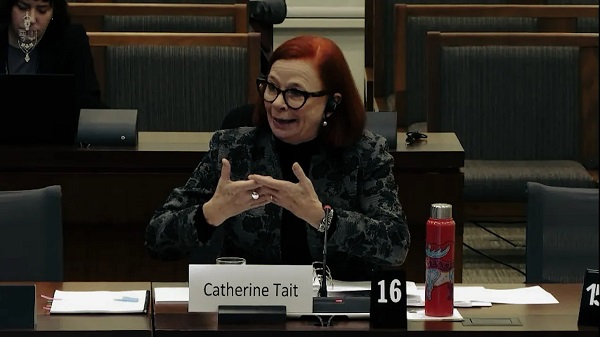
 Opinion2 days ago
Opinion2 days agoCBC on Trial: CBC CEO Catherine Tait Faces Brutal Takedown in Canadian Heritage Committee Hearing
-
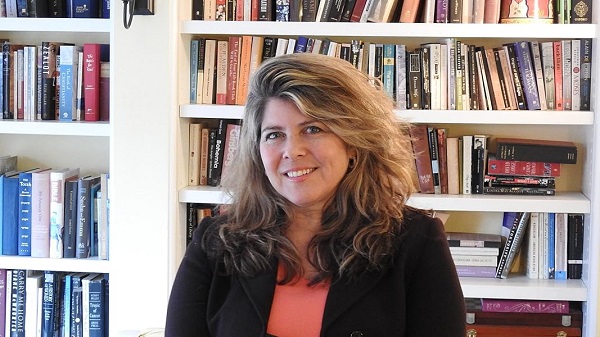
 COVID-191 day ago
COVID-191 day agoNew book edited by Naomi Wolf exposes Pfizer’s ‘crimes against humanity’
-

 Censorship Industrial Complex2 days ago
Censorship Industrial Complex2 days agoLegacy Media Outlets Buried Research Showing DEI Makes People More Likely To Agree With Hitler
-

 Business2 days ago
Business2 days agoCBC CEO Says She Is Entitled To Massive Taxpayer-Funded Bonus
-

 Business2 days ago
Business2 days agoBREAKING ALERT: Trump Threatens 25% Tariff on All Goods From Canada and Mexico, Cites Flood of Fentanyl and Illegal Migrants
-

 Business2 days ago
Business2 days agoTrudeau’s Delusion Meets Trump’s Tariffs: 25% Hit on Canada and Mexico Could Cripple Economies Overnight!
-

 Alberta1 day ago
Alberta1 day agoProtecting Alberta’s economic future from Ottawa
-

 International1 day ago
International1 day agoWas the US election decided when the transgender movement overplayed its hand?



